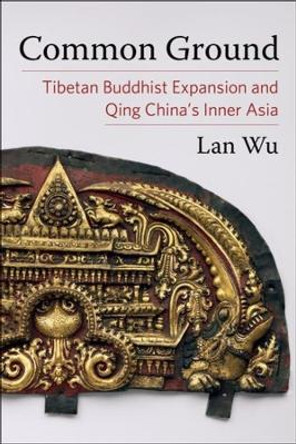Description
About the Author
Paul Nietupski is professor of religious studies at John Carroll University.
Reviews
One of the largest and most powerful institutions in Tibetan history, unique in its placement amid segmented territories ruled by several distinct inner Asian groups, Labrang Monastery has long been a site in need of critical study. Paul Kocot Nietupski's work brings us a thoroughly researched and sophisticated social and political history of Labrang Monastery. Drawing on a wide range of written and oral source material, Nietupski supplements a welcome survey of Amdo's religious and social structures with a careful study of the shifting social and political infrastructure underlying Labrang and its support communities. His examination of the spiritual and temporal authority of Labrang Monastery and the special forms of diplomacy needed for interaction with surrounding Manchu, Chinese, Mongol, and Muslim groups in this volatile region, makes a fundamental contribution to our knowledge of Asian history. -- Frances Garrett, University of Toronto
Labrang Tashikyil is one of the major Tibetan Buddhist monasteries and no contemporary Western scholar has researched its place in the Tibetan cultural world more deeply or more extensively than Paul Nietupski. This study is rich in detail in so many different areas. Labrang's history, economic structure, scholarly traditions, political role in the Tibetan Northeast, and much more are intricately described by Prof. Nietupski. He brings to the reader much that is new in the way of both information and insights. This is a most welcome volume... -- Elliot Sperling, Indiana University
Nietupski has provided us a fascinating snapshot on how multi-dimensional Buddhist monasteries can be and often were. The placement of the monastery in the frontier between Tibet and China, with significant Mongol and Muslim populations in the mix, reveals in detail the institutional, political and religious dynamics of the area. Far from the image of Buddhist monasteries as contemplative enclaves removed from society, Labrang is shown to be the major social force in its area of Chinese Central Asia. An excellent example of the intersection of written sources in Tibetan and Chinese with the oral histories that Nietupski secured during his lengthy fieldwork in Labrang. -- Ronald M. Davidson, Fairfield University
Labrang Tashikyil is one of the major Tibetan Buddhist monasteries and no contemporary Western scholar has researched its place in the Tibetan cultural world more deeply or more extensively than Paul Nietupski. This study is rich in detail in so many different areas. Labrang's history, economic structure, scholarly traditions, political role in the Tibetan Northeast, and much more are intricately described by Prof. Nietupski. He brings to the reader much that is new in the way of both information and insights. This is a most welcome volume. -- Elliot Sperling, Indiana University
Book Information
ISBN 9780739164433
Author Paul Kocot Nietupski
Format Hardback
Page Count 306
Imprint Lexington Books
Publisher Lexington Books
Weight(grams) 617g
Dimensions(mm) 240mm * 163mm * 26mm








